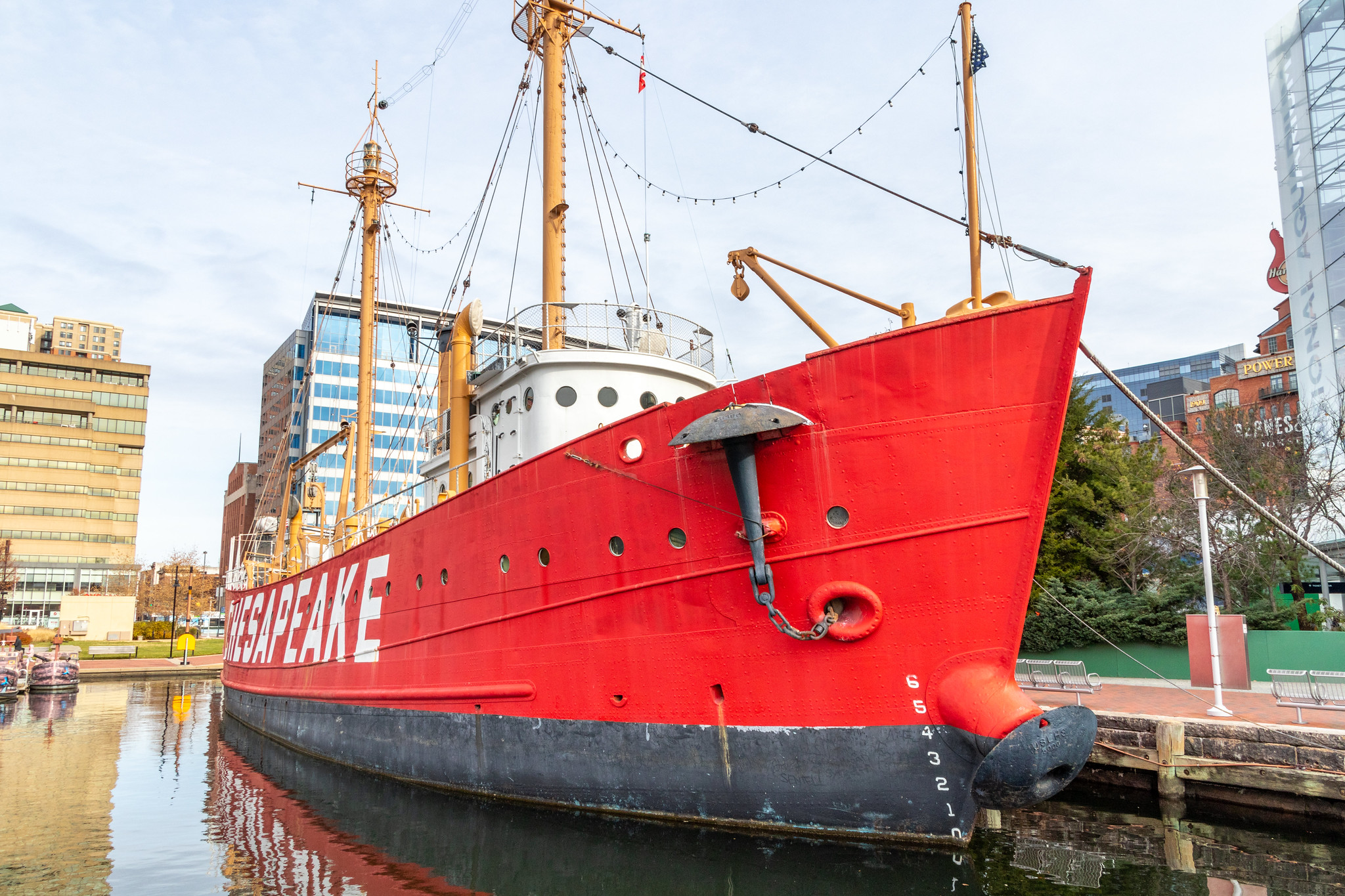Lightship Chesapeake November 30, 2019
This 133x30ft (40x9m) ship was built in 1930 by Charleston Dry Dock & Machine Company in South Carolina.
Designed for a crew of 16 she had several lives over her 40 years of active service. From 1930 to 1933 she was designated LV-116 Fenwick and assigned to Fenwick Shoals off the coast of Delaware.
In 1933 she was renamed Chesapeake and moved to the mouth of the Chesapeake Bay where she remained until 1942. In 1939 she and other vessels like her were transferred from the Lighthouse Service to the Coast Guard. Many veteran crew departed at this point as pay was cut sharply from $63 per month to $36.
World War II brought many changes including the withdrawal of light ships from their stations around the country for security purposes. She was renamed to WLV-538, painted grey, and given a pair of 20mm cannons then transferred to Cape Cod, Massachusetts for inspection and guard duty.
In 1945 at the end of World War II she got her old name and station back where she remained until 1965 where she was replaced by a light tower by the name of Chesapeake Light Station which required a smaller crew of 6 at the time but is now automated.
In 1966 she was renamed to Delaware and moved to the Delaware Bay where she remained until 1970 when she was replaced by a buoy beacon.
In 1971 she was decommissioned then transferred to the National Park Service and served as a floating classroom at Hanes Point, Washington D.C. until 1980.
In 1981 she was given to the city of Baltimore and is now operated as one of four museum ships and one lighthouse by Historic Ships in Baltimore.
As one tours this ship one imagines what it must have been like for the crew to be on station for 2 months at a time. They would have one month off after the 2 months on.
At the rear of the ship is quarters for two of the officers (the captain’s quarters were closer to the pilot house) winging a room in which the steering mechanism resides over leather seating.
Just ahead of this room a chill box can be found which had been fed 500 pounds of ice per month to keep the contents cold.
Near the bow of the ship is where the crew berthed, two to a room.
In the bow lives the large anchor windlass.
A peek into the engine room area affords a glimpse into what is on the deck below.
A mess hall occupies space between the crew quarters and the officers space.
A kitchen lives in the middle area above the engine room.
One deck up is the pilot house.
It is compact but has room to move around.
The engine telegraph can be found here.
Its berth mate is the submarine Torsk which I will blog about sometime in the future. Both live next to the Baltimore Aquarium. Also check out this video I took of the Lightship.
Definitely visit this ship and her Historic Ships sisters on your visit to Baltimore, Maryland! Sources of information for this blog are the Chesapeake Chapter of the United States Lighthouse Society, LighthouseFriends.com, and Wikipedia. You can view my photography (more than just ships!) here and more videos here.




















